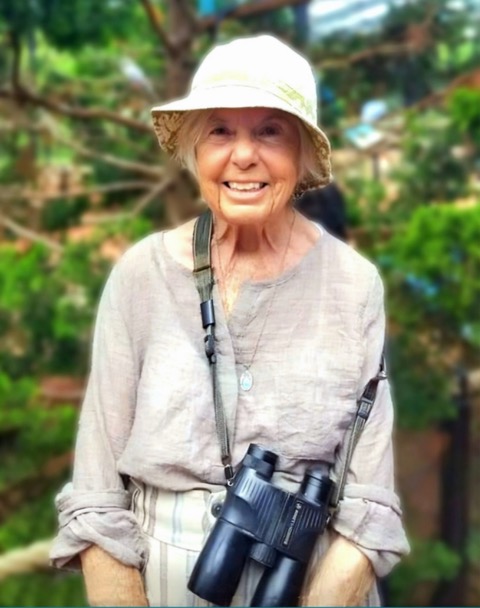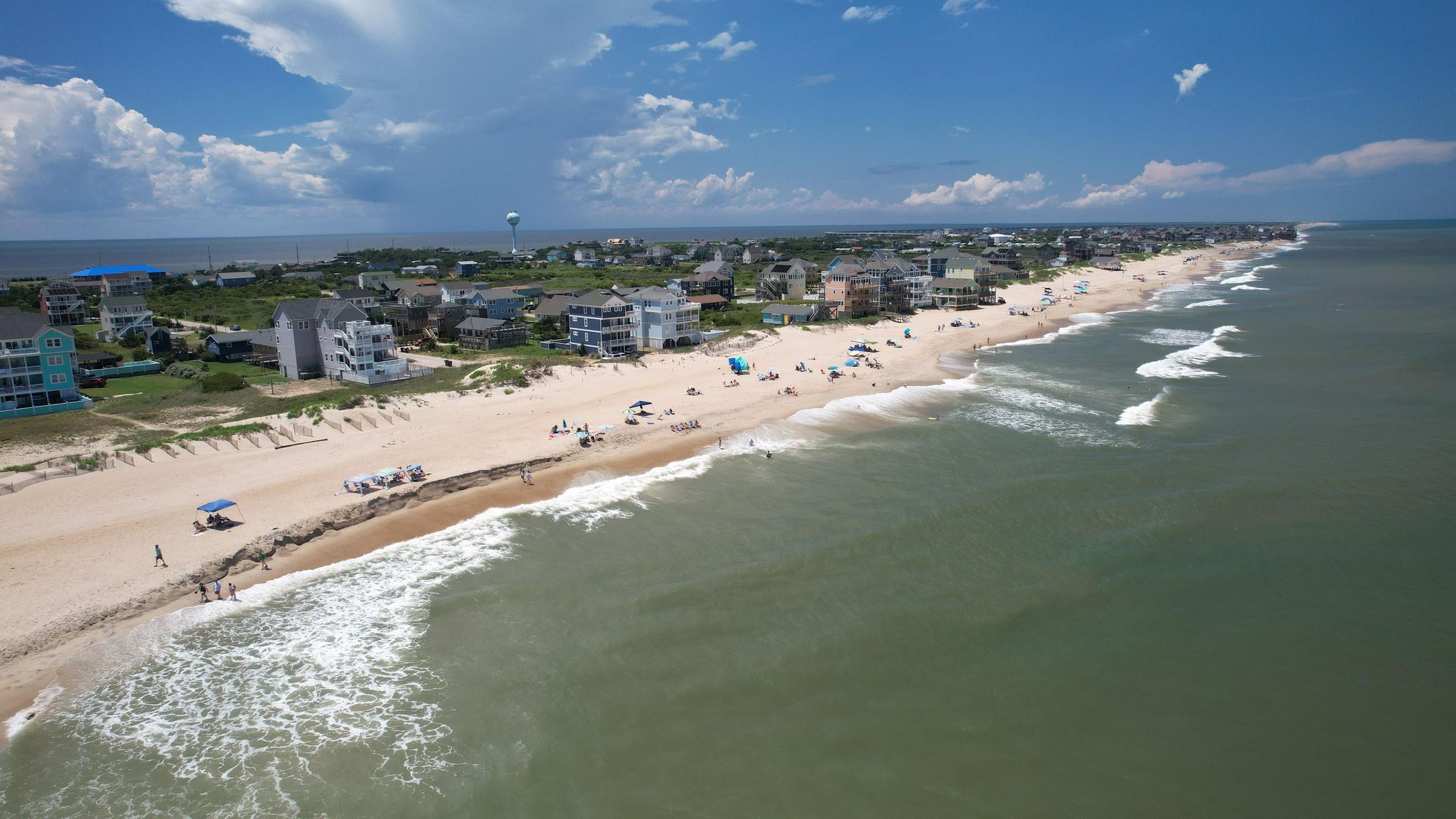Cape Hatteras Lighthouse lens makes a temporary move during museum renovation

The original Cape Hatteras Lighthouse lens is on the move. The roughly 20-foot-tall structure, which is housed within the Graveyard of the Atlantic Museum in Hatteras, is painstakingly being taken apart and relocated to a secure and on-site storage area while work progresses on the museum’s total renovation.
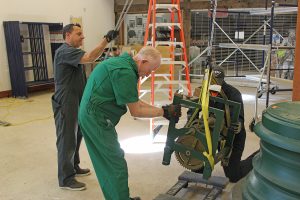
Though the prospect of a museum renovation had been floating around for some time, in May 2021, the museum received a $4.1 million grant from the N.C. Department of Natural and Cultural Resources to conduct an overhaul of the Hatteras village site.
Months later, Dare County and the Outer Banks Visitors Bureau stepped in with an extra $500,000 in funds, which the state then boosted with an additional $400,000, resulting in a total of $5.1 million to bring the remodeling project to life.
In the fall of 2022, the Graveyard of the Atlantic Museum began the slow and intricate process of removing exhibit displays, and storing hundreds of artifacts to prepare for the actual renovation work to come.
But when it came to the heavy but delicate first-order Fresnel lens, an expert was needed to temporarily disassemble the structure, move it several hundred feet from the museum’s front gallery to the storage site, and eventually put it back together.
This is where Jim Woodward and his small team of Tommy Cumella and Leon Hodge stepped in.
Woodward, owner of The Lighthouse Consultant, LLC, has 58 years of experience in lighthouse lens restoration work, and apprenticed under the last remaining U. S. Lighthouse Service Lampist in the Coast Guard in 1965. He is one of the few experts in the world on Fresnel lens repairs, and he is already familiar with the Cape Hatteras Lighthouse’s first-order Fresnel lens, as he was the one who installed it in the museum’s front gallery 18 years ago.
“This is about the oldest [lens] I have ever worked on,” said Woodward. “It’s one of the first ones that the U.S. ever bought, around 1852.”
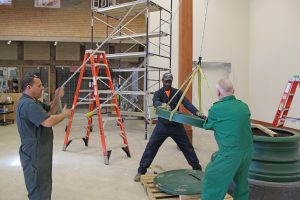
A fully-intact Fresnel lens, (pronounced “Frenel” due to its French creator, Augustin-Jean Fresnel), is rare. There are an estimated 400 left in the country, including less than 40 first-order Fresnel lenses, which is the largest kind.
Understandably, taking apart the more than 170-year-old fixture requires some nuance. The high-quality optical glass panels will “almost chip if you look at it wrong,” according to Woodward, and certain elements of the structure can weigh up to 1,200 pounds.
Luckily, Woodward and his team have a combined 75 years or so of experience, performing lighthouse-related jobs at sites and museums around the country, and have tackled this exact process before.
“We assembled it in the museum 18 years ago, piece by piece, one hunk of iron after another,” said Woodward. “It’s generally easier to take it apart, because you have gravity on your side.”
Woodward and his team arrived on Saturday, March 18, to begin the disassembly, and the process to carefully remove and transport every component takes about a week.
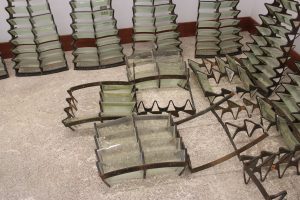
A rigging system and movable pallets on wheels are used for the heavier elements, like the 1,200-pound bottom base casting, or the big central disk with a shaft that has to be hoisted out of the base first, before being swung around the pedestal and lowered onto a palette.
On the surface, it sounds like the sort of work that could lead to multiple dings and damage along the way, but with the move almost complete, the project has gone seamlessly.
“Never say never, but I haven’t broken anything [in my career] yet,” said Woodward. “After 58 years, I hope I know what I’m doing.”
The lighthouse disassembly and transport will be complete by the end of the week, while renovation work throughout the museum continues in earnest in the months to come.
The footprint of the museum, which includes 5,500 square feet of gallery space and 2,000 square feet of lobby space, will remain the same. But the exhibits and displays themselves will evolve in a way that will effectively double the number of artifacts that can be shown in any given year.
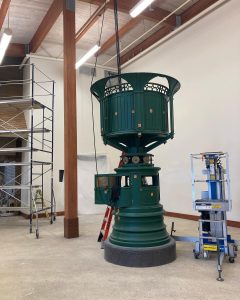
In the new design, exhibits will be able to be rotated every six months or so, with treasured artifacts coming out of the storage area to be showcased in interactive displays.
The famous Cape Hatteras Lighthouse lens will also have a new home somewhere in the main gallery, instead of the front gallery where it originally stood and greeted museum-goers.
There is not an exact date for the project’s completion, but when the museum does reopen sometime in 2023, it will be like a brand-new attraction for even the most frequent and seasoned museum visitors.
And when the interior work is complete, and it’s time to set the Cape Hatteras Lighthouse lens at its new and permanant home, Woodward and his team will return to put the lens back together. With decades of experience, the lens will once again be in good hands.
“Not unlike this historic lens, Jim Woodward is himself an American treasure and should be commended for his amazing skills and incredible depth of knowledge,” said John M. Havel of the Outer Banks Lighthouse Society. “He states that he stopped counting after working on 250 lenses, but guesses that he is up to 350 or 400 by now.”
For more information on the Graveyard of the Atlantic Museum renovation project, click here.







